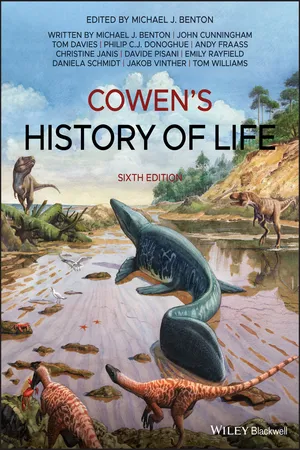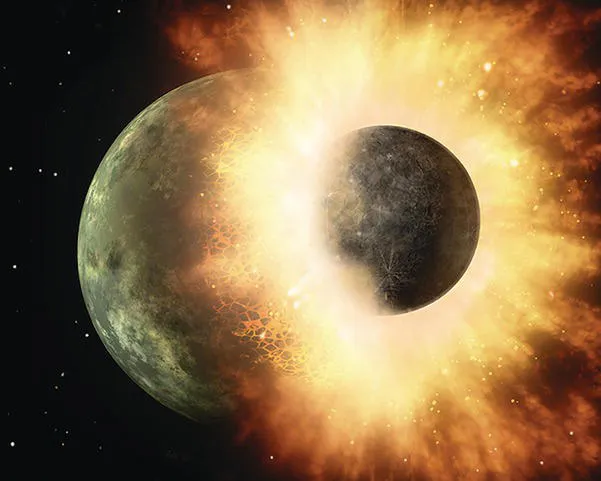
- English
- ePUB (mobile friendly)
- Available on iOS & Android
Cowen's History of Life
About this book
A newly revised and fully updated edition of the market-leading introduction to paleontology
Designed for students and anyone else with an interest in the history of life on our planet, the new edition of this classic text describes the biological evolution of Earth's organisms, and reconstructs their adaptations and the ecology and environments in which they functioned.
Cowen's History of Life, 6th Edition includes major updates, including substantial rewrites to chapters on the origins of eukaryotes, the Cambrian explosion, the terrestrialization of plants and animals, the Triassic recovery of life, the origin of birds, the end-Cretaceous mass extinction, and human evolution. It also features new chapters on plants, soils and transformation of the land; the Mesozoic marine revolution; and the evolution of oceans and climates. Beginning with the origin of the Earth and the earliest life on earth, the book goes on to offer insightful contributions covering: the evolution of Metazoans; the early vertebrates; life of vertebrates on land; and early amniotes and thermoregulation. The book also looks at: dinosaur diversity, as well as their demise; early mammals; the rise of modern mammals; the Neogene Savannas; primates; life in the ice ages; and more.
- Covers the breadth of the subject in a concise yet specific way for undergrads with no academic background in the topic
- Reorganizes all chapters to reflect the geological series of events, enabling a new focus on big events
- Updated with three brand new chapters and numerous revised ones
- Put together by a new editorial team internationally recognized as the global leaders in paleontology
- Filled with illustrations and photographs throughout
- Includes diagrams to show internal structures of organisms, cladograms, time scales and events, and paleogeographic maps
- Supplemented with a dedicated website that explores additional enriching information and discussion, and which features images for use in visual presentations
Cowen's History of Life, 6th Edition is an ideal book for undergraduate students taking courses in introductory paleontology, as well those on global change and earth systems.
Frequently asked questions
- Essential is ideal for learners and professionals who enjoy exploring a wide range of subjects. Access the Essential Library with 800,000+ trusted titles and best-sellers across business, personal growth, and the humanities. Includes unlimited reading time and Standard Read Aloud voice.
- Complete: Perfect for advanced learners and researchers needing full, unrestricted access. Unlock 1.4M+ books across hundreds of subjects, including academic and specialized titles. The Complete Plan also includes advanced features like Premium Read Aloud and Research Assistant.
Please note we cannot support devices running on iOS 13 and Android 7 or earlier. Learn more about using the app.
Information
1
The Origin of Life on Earth
In This Chapter

How Geology Works
How Paleontology Works

Table of contents
- Cover
- Table of Contents
- Preface
- About the Companion Website
- 1 The Origin of Life on Earth
- 2 The Earliest Life on Earth
- 3 The Origin of Eukaryotes
- 4 The Evolution of Metazoans
- 5 The Cambrian Explosion
- 6 Changing Life in a Changing World
- 7 The Early Vertebrates
- 8 Leaving the Water
- 9 Early Tetrapods and Amniote Origins
- 10 Early Amniotes and Thermoregulation
- 11 The Mesozoic Marine Revolution
- 12 The Triassic Takeover
- 13 Dinosaurs
- 14 Birds and the Evolution of Flight
- 15 The Cretaceous Terrestrial Revolution
- 16 The End of the Dinosaurs
- 17 Changing Oceans and Climates
- 18 The Origin of Mammals
- 19 Cenozoic Mammals
- 20 Geography and Evolution
- 21 Primates
- 22 Evolving Toward Humans
- 23 Life in the Ice Age
- End User License Agreement